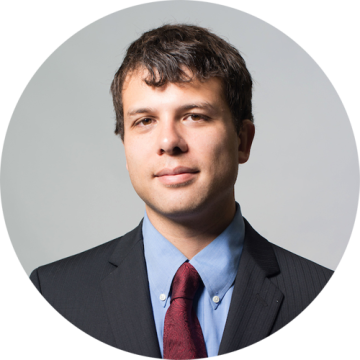
Carlson School Faculty Share Their Thoughts on Going Virtual
Wednesday, July 15, 2020
When moving courses to a remote format during the Spring semester, Carlson School faculty members were navigating uncertain terrain sans directions.
"We had to ‘go virtual’ almost overnight where almost no professor had a map,” says Vlad Griskevicius, professor and Carlson Family Foundation Endowed Chair in Marketing. "And over the course of going virtual, we have created some maps and some approaches to this terrain and have some knowledge of what’s working better and what's not working better.”
Eight Carlson School faculty members shared their reflections on the journey with remote teaching in the spring semester below.
The journey with remote teaching
Alan Benson, assistant professor, Work & Organizations
The tools at Benson’s disposal allowed him to maintain some levity in his courses. In this video, he discusses the role of asynchronous and synchronous teaching and how to maximize class time together with his students.
Elizabeth Campbell, assistant professor, Work & Organizations
In this video, Campbell discusses her approach to teaching virtually, creating a space for student reflection, and why managing her students' well-being is important.
Michelle Champlin Bergner, lecturer, Marketing
A first-time instructor, this spring semester was all new to Champlin Bergner. She found four takeaways from her experience, ranging from the type of teacher she wants to become to the resiliency of young people.
Necati Ertekin, assistant professor, Supply Chain & Operations
It didn’t take long for Ertekin to figure out that the same approaches he used for in-person instruction would no longer apply in a remote setting. He describes moving from “emotional distancing with students while maintaining social closeness” to “emotional closeness while maintaining social distancing”.
Vlad Griskevicius, professor, Carlson Family Foundation Endowed Chair in Marketing
While navigating the uncertainty of moving all classes virtually, Griskevicius noticed four different approaches taken by professors. Griskevicius outlines each and shares why he believes a hybrid format is most successful.
Veronica Marotta, assistant professor, Information & Decision Sciences
Knowing technology issues were likely for both teacher and student, Marotta opted for maximum flexibility. This was well-received by students but left the professor with an important realization about the importance of student interaction.
Kendell Poch, senior lecturer, Accounting
Moving multiple courses to a remote format turned out to be a heavier lift than Poch anticipated. But, some lessons from the switch will stick, including how to maintain contact with students and how to structure her courses.
Aks Zaheer, professor, Curtis L. Carlson Chair in Strategic Management
Zaheer never expected virtual teaching and learning to fully replicate the in-person experience. However, by being flexible and adaptable, his teaching overcame challenges and leveraged new formats to help students learn.







